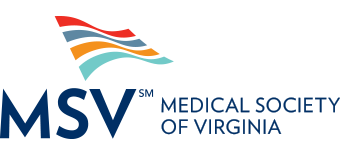Do Your Patients Know the 8 Essentials of Heart Health?
By Gary Miller, MD, FACC
You know the American Heart Association (AHA) added a new factor to its cardiovascular health checklist in 2022, expanding its Life’s Simple 7TM to Life’s Essential 8TM guidelines.
But do your patients know about the new factor?
With so much competition for your patients’ time and attention from news and social media — in addition to the demands of work and life — it’s more than likely they aren’t aware. Right now during February’s American Heart Month it’s a perfect time to make sure your patients know about the new factor as well as remind them about what they can focus on to help keep their heart healthy all year round.
Here’s a highlight-reel breakdown of the AHA’s Life’s Essential 8TM you can use as a guide to talk to your patients — starting with that 8th new factor: sleep.
-
Sleep Duration
Healthy sleep is critical for optimal cardiovascular health! Adults need 7 to 9 hours of sleep every night. Depending on their age, children may need more. Sleep helps patients better manage weight, blood pressure, and risk for Type 2 diabetes. Encourage your patients to monitor their sleep with an app or wearable device to discover any concerns they can then bring to your attention.
-
Diet
Most people understand the diet-health connection these days, but it’s never a bad idea to remind your patients that how and what they choose to eat affects more than just their waistline. In fact, for patients with hypertension, diet may have the biggest impact on reducing their heart attack risk. The AHA recommends assessing diet based on the Dietary Approaches to Stop Hypertension eating pattern, also known as DASH, which includes: high intake of fruits, vegetables, nuts and legumes, whole grains, and low-fat dairy, and low intake of sodium, red and processed meats, and sweetened drinks. The National Heart, Lung and Blood Institute has a helpful DASH diet chart you can refer your patients to for an overview.
-
Blood Pressure
The AHA’s blood pressure guidelines have not changed since 2017. Remind patients that their levels should be less than 120/80 mm Hg for optimal heart health, and that adherence to the other 7 factors of these Life’s Essential 8TM guidelines can help reduce blood pressure, including the DASH diet, sleep, and physical activity, plus strategies like stress management and weight loss.
-
Physical Activity
If they aren’t already, your patients need to get moving! For adults, that means at least 150 minutes of moderate-intensity aerobic activity like a brisk walk per week — or at least 75 minutes of vigorous-intensity aerobic activity like running per week. Children likely need more, based on their age. The ultimate goal during activity is to raise their heart rate and break a sweat! Remind your patients they don’t have to go to the gym, because everyday activities like dancing and pushing a lawn mower count!
-
Body Mass Index
Though experts acknowledge body mass index (BMI) is an imperfect metric for a variety of reasons, the fact that it’s easily calculated and widely available still makes it a reasonable gauge to assess weight concerns that may lead to health problems. Generally speaking, your adult patients should strive for a BMI between 18.5 and 24.9 for the best cardiovascular health. You will know best how to inform them the impact of their race, ethnicity, or ancestry on BMI ranges. You can also recommend the Centers for Disease Control and Prevention’s BMI calculators for your patients — there’s one for adults and one for children.
-
Nicotine Exposure
The Life’s Essential 8TM guidelines have been updated to include restricting inhaled nicotine-delivery systems, including e-cigarettes and vaping devices, as well as traditional cigarettes. However your patients are getting it, nicotine remains a no-no for heart health.
-
Blood Lipids
The metric for blood lipids has been updated in the Life’s Essential 8TM guidelines to use non-HDL cholesterol as the preferred number to monitor instead of total cholesterol. The reason for the change is the fact that non-HDL cholesterol can be measured without required fasting, which increases its availability to be reliably calculated. This is good news for you and for your patients.
-
Blood Glucose
This metric was also updated in the Life’s Essential 8TM guidelines and expanded to include the option of hemoglobin A1c readings or blood glucose levels for people with or without Type 1 or Type 2 diabetes or prediabetes, because hemoglobin A1c can better reflect long-term glycemic control.
One of every three patients (32%) hospitalized with COVID-19 show heart muscle damage from release of the heart muscle protein troponin . And 25% develop the heart rhythm disorder atrial fibrillation. Covid-19 can cause an inflammatory response and trigger a system wide clotting reaction triggering lung and heart clots. Influenza can also trigger a system wide inflammatory response that can trigger heart attacks Protect your heart health by keeping your COVID-19 and influenza vaccinations up to date!
In addition to collaborating with you to understand and improve their heart health and reduce risks, your patients can do a self-assessment using the Life’s Essential 8TM guidelines online with the AHA’s My Life Check® Tool, although they will need their metrics for blood pressure, blood lipids, and blood glucose to complete the assessment.
The information contained in this blog is for educational purposes only and does not constitute health care advice.


